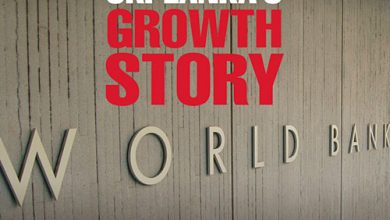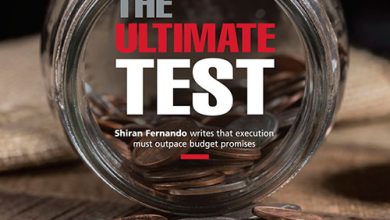DEBT RESTRUCTURING

HANGING BY A THREAD
Shiran Fernando describes the complexities of restructuring Sri Lanka’s debt portfolio

In the lead up to the presidential election on 21 September, the leading candidates’ manifestos focussed on the IMF programme and continuing the existing debt restructuring process based on the debt restructuring analysis (DSA) provided by the International Monetary Fund.
President Anura Kumara Dissanayake originally expressed the need to present an alternative DSA but later clarified that his government would be agreeable to maintain the status quo.
Two days before the presidential election, commercial creditors comprising international sovereign bondholders and the China Development Bank announced that they reached an agreement in principle.
This is a significant development for Sri Lanka in the context of debt sustainability.
DEBT RESTRUCTURING Debt restructuring is technical in nature and can be difficult to understand. Unlike in the case of a company that defaults on its debt, there is no formal mechanism or process to renegotiate sovereign debt.
Historically, debt has been negotiated through the Paris Club, and the lion’s share of it was from members such as France, the UK and the US through development loans.
Over the past two decades however, this picture has changed with more private debt being generated either through the bond market or private creditors like banks. Therefore, there is no template for a country to follow in restructuring its debt.
In the post-pandemic debt restructuring environment, there has also been a differentiation in the frameworks for restructuring. Low income countries such as Zambia have been able to utilise the G20 Common Framework while middle income countries like Sri Lanka have had to simultaneously negotiate with multiple creditors.
External debt restructuring consists of relief provided to debt from bilateral countries and commercial creditors such as international sovereign bondholders (ISB). In the case of Sri Lanka, this is close to US$ 27.9 billion out of about 37 billion dollars in external debt held by the government.
Multilateral debt from institutions such as the World Bank, IMF and Asian Development Bank (ADB) are generally not part of external debt restructuring. And multilateral creditors often lend to countries that have an IMF programme in place.
Sri Lanka’s bilateral debt stands at US$ 5.8 billion owed to countries in the Official Creditor Committee (OCC) – such as the US, Japan, France and India – and 4.2 billion dollars to the Export-Import Bank of China.
In addition, the country owes about US$ 300 million to creditors like Kuwait, Saudi Arabia, Iran and Pakistan.
In June, it was announced that the OCC reached an agreement on restructuring of Sri Lanka’s debt.
DEBT NEGOTIATIONS Parallel to the OCC discussion, Sri Lanka has been dialoguing with ISBs and private creditors such as the China Development Bank (CDB) on how this debt can be restructured.
Sri Lanka owes 14.2 billion dollars to bondholders and US$ 3.2 billion to the CDB. In July, there was an announcement about the terms of restructuring of the debt owed to ISBs, which was not fully compatible with the IMF’s DSA.
As a result of further negotiations, a revised offer was published in September.
This was noteworthy because the release included ISB foreign and local holders, and the CDB. Other restructuring programmes, as in the case of Zambia, saw issues with inter-creditor equity between bondholders and Chinese lenders, which resulted in significant delays.
The ISBs will take a haircut on the principal amount by 27 percent, and a substantial coupon adjustment by between three and four percent in new instruments that will be offered.
Furthermore, the new bonds that will be created under the restructured programme will be called macro-linked bonds with nominal GDP as a control variable. This variable will determine whether Sri Lanka has to pay a higher coupon rate for better GDP performance.
These revised terms in September show that the upside benefits for bondholders have reduced. For example, the biggest upside scenario for bondholders will see the coupon rate reduced by 1.6 percent.
The GDP thresholds in the maximum loan balance (MLB) for the three upper limits have increased compared to the July proposal. For instance, the upper limit in July was an average nominal GDP of 100 billion dollars in 2025-2027 while the September proposal lists it at US$ 107 billion.
Therefore, unless Sri Lanka has a higher growth trajectory in the next three years, there’s a lower likelihood that these limits will be triggered, resulting in greater coupon payments to bondholders.
Additionally, the terms note that there will be a governance linked feature on two of the plain vanilla bonds, which total 1.7 billion dollars. Details of this and the CDB are unclear at this time.
The conclusion of external debt restructuring hinges on the president continuing with the existing discussions and finalising the proposed deal.






